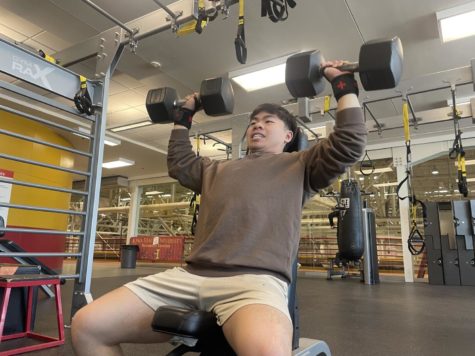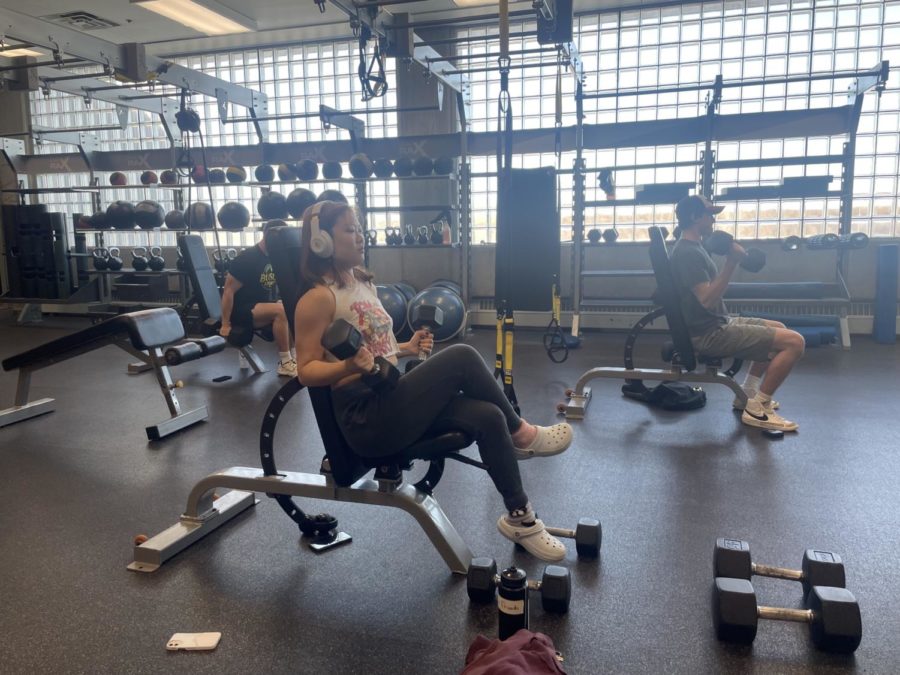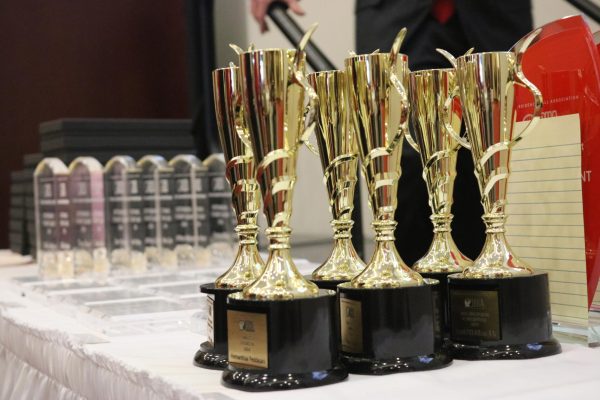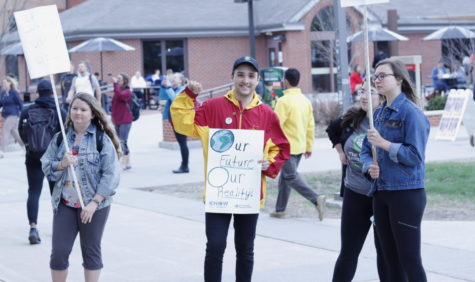Winter workouts: Finding consistency in the cold
Liv Wang, a junior studying genetics, lifts weights at State Gym Feb. 5.
It can be difficult to exercise consistently during the season of biting temperatures and icy conditions. The days are shorter, the sun shows itself less often and as a result, motivation seems to run lower than it does in warmer months.
Despite the harsh climate of a midwestern winter, many students find ways to stay active on blustery days by working out at one of Iowa State’s Recreation Services locations.
“I don’t want to lose progress,” Ryan Cook, a senior studying aerospace engineering, said. “I make a lot of progress during the summer and then the beginning of the fall, so I don’t want to lose it during the middle of the school year.”
Cook works out at State Gym, utilizing the facility to do strength training four to five times each week and calisthenics three times each week.
Brenna Fisher, a sophomore studying kinesiology and health, is a middle-distance runner in ISU’s Running Club. Her personal training regimen is put together by Ben Tilus of Ankeny’s XLR8 Performance Lab and consists of anywhere from 35 to 60 miles per week.
If it is 20 degrees or lower, Fisher typically opts to run indoors. She completes higher-intensity workouts on the upper track at Lied Recreation Athletic Center and logs the rest of her mileage on the treadmills at State Gym.
“When you’re on a treadmill, you have nothing else to do, so you break it down into smaller chunks,” Fisher said. “It can be very hard sometimes because you’re not going anywhere. You start to wonder, ‘Why am I doing this?’”

Fisher’s motivation to push through hours of sometimes monotonous training comes from the objectives she has set for herself.
“My goal right now is to try to walk on to the track team, which is a big part of the reason why I keep pushing myself to train each and every day,” Fisher said.
For some individuals, the format of a group fitness class provides an encouraging atmosphere that helps them power through the most challenging circumstances, weather-related or not.
“What always kept me motivated is when I found the structure of a group fitness class, it helped me get more motivated,” Sophia Vitale, a junior studying kinesiology and health, said.
After discovering group fitness, Vitale has been a fitness instructor with Recreation Services for close to a year. Vitale currently teaches Zumba and Cyclone Sculpt. She is also a program assistant in the Recreation Services administrative office.
Although not much of her exercise routine is impacted by the winter weather, Vitale also seeks inspiration from her father.
“My dad is a football coach, so he’s always got that coach mentality,” Vitale said. “One thing he said to me that really stuck with me is, ‘When you feel that you don’t want to go, that is when you should definitely go.’”
Individuals who prefer to engage in outdoor activities may find it challenging to complete the same things in the winter. However, Ana Paula Fantini, an associate teaching professor in Iowa State’s kinesiology department, encourages people to find indoor alternatives during the winter.
For example, moving an outdoor game of basketball to an indoor facility.
“You have to think of the difference between having access to outdoor activities, if there’s a possibility to bring those outdoor activities indoors,” said Fantini, who has a doctorate of philosophy focused in exercise physiology.
According to the Physical Activity Guidelines for Americans, it is recommended that adults record a minimum of 150 minutes of moderate-intensity movement.
Whether students choose to work out at a gym or in the comfort of their own dwelling, Fantini believes it is crucial to remain active year-round. Exercise can be completed by searching for routines online or simply doing chores that involve mobility.
“It doesn’t really make a difference on where you do it or how you do it,” Fantini said. “It’s just important for people to do it.”
Your donation will support the student journalists of the Iowa State Daily. Your contribution will allow us to purchase equipment, send our student journalists to conferences and off-set their cost of living so they can continue to do best-in-the-nation work at the Iowa State Daily.















